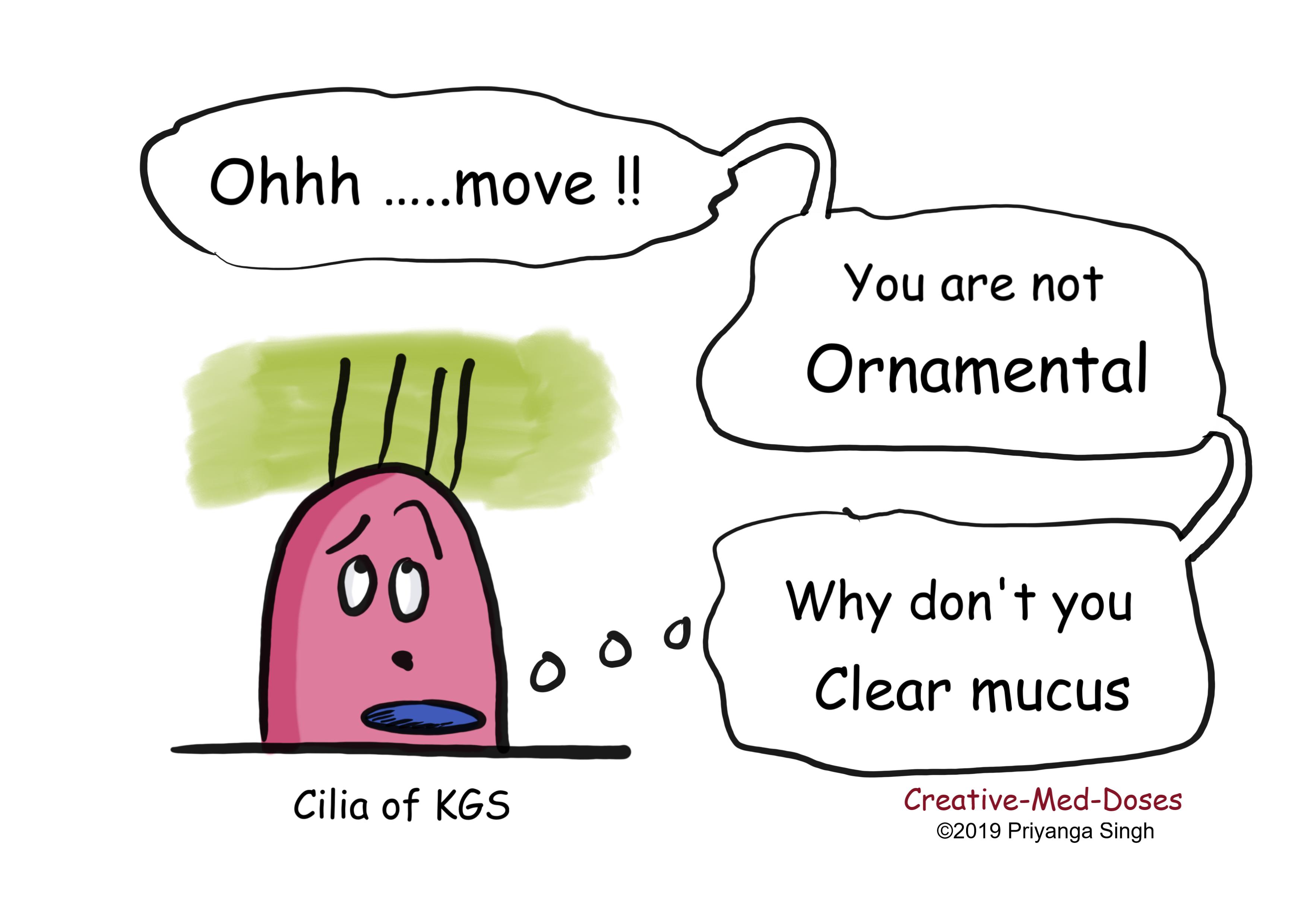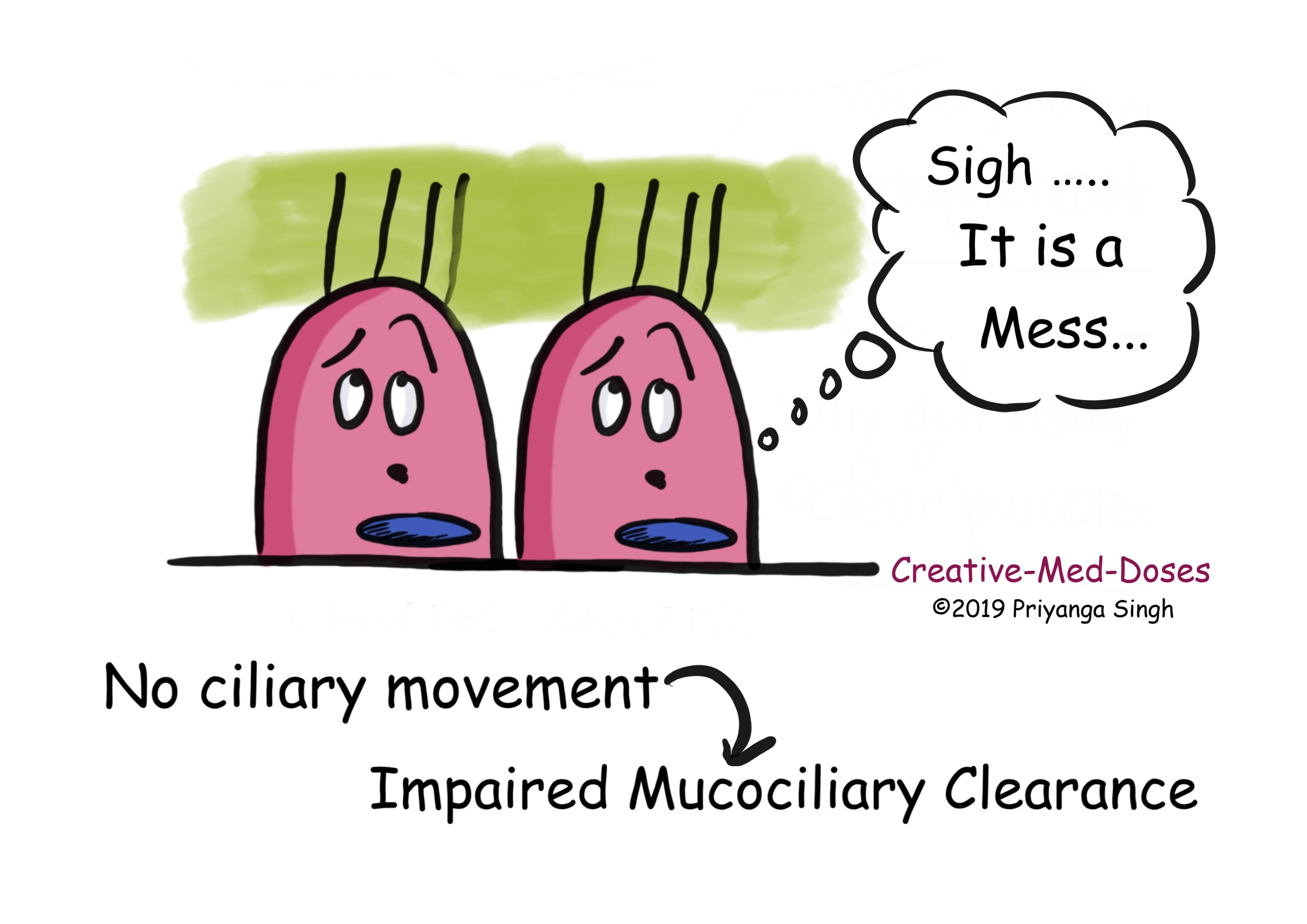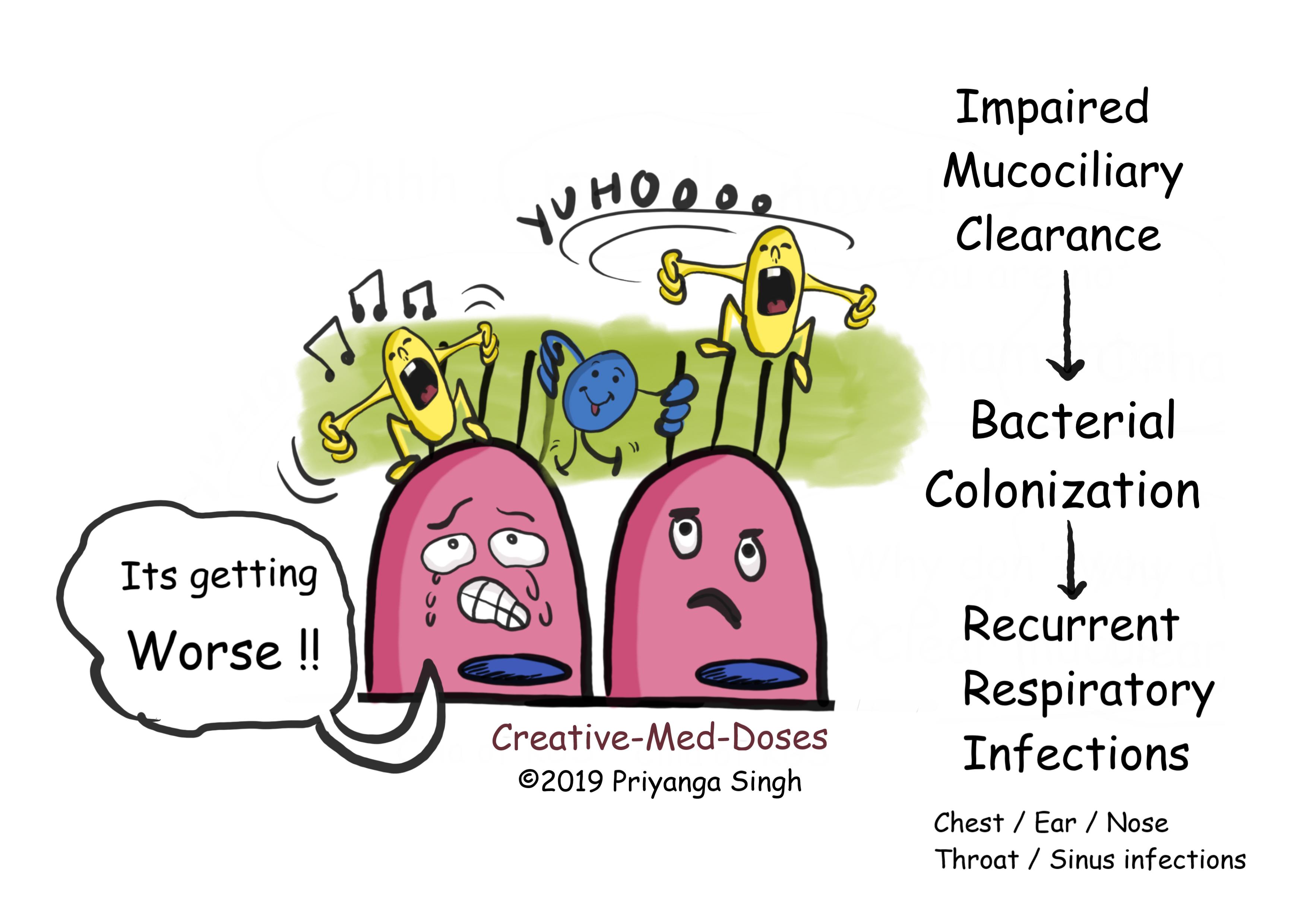Mucociliary clearance
Mucociliary clearance is a significant innate defense mechanism against inhaled microbes and irritants. When we breath, inhaled particles such as dust and bacteria enter the airways and are constant threat causing inflammation and infection.
The function of the cilia in the respiratory tract is to beat in a synchronized manner propelling mucus and substances trapped within the mucus to the pharynx where they will be swallowed.
..

...
When Mucociliary clearance is defective airway will have to rely on cough clearance, which means the ability to shift mucus towards the pharynx by means of coughing. Hence coughing is increased in cases with disrupted mucociliary clearance.
There are two main reasons why mucociliary clearance could be impaired.
- Ciliary dyskinesia- Movements of the cilia can be hindered directly, for example by genetic defects in central proteins of the axoneme or by temporary dysfunction caused by infection or environmental influences, example primary or secondary ciliary dyskinesia.
- Mucus layer defect- The mucus layer can constitute the main problem when dehydration of the mucus leads to increased viscosity which leads to ineffective ciliary clearance. Dehydration can cause the periciliary liquid layer to shrink and the cilia will be squeezed underneath the mucus layer hindering their movement. Cystic fibrosis is caused by mutations in the gene encoding the Cl− channel known as CFTR, leads to dehydration of the mucus layer and shrinkage of the periciliary liquid layer, and impeding mucus clearance by both ciliary beating and coughing.
...

...

...
Impaired mucociliary clearance is also seen in patients with asthma and chronic obstructive pulmonary disease. An important part in their pathogenesis is the hypersecretion of mucin leading to excessive amounts of mucus with an increased viscosity. This rubbery mucus is hard to clear from the airways and in severe cases can end up forming mucus plugs predisposing a person for infection or localized atelectasis.
The primary symptoms of impaired mucociliary clearance are productive cough and dyspnoea. Dyspnoea is a result of mucus obstructing airflow in numerous airways, which in cases of total obstruction can lead to atelectasis.
Recurring sinopulmonary infections starting in early childhood are almost universal in patients with substantial and permanent defects of mucociliary clearance.
The mucus plugs blocking smaller airways creates a local environment that promotes bacterial growth. This long‐term localized infection leads to mucus gland hypertrophy and epithelial damage further impairing mucociliary clearance from that area. With time, the inflammation can lead to bronchiectasis characterized by permanent dilation of the airway and thickening of the bronchial wall.
...

...
Interesting animation https://www.youtube.com/watch?v=HMB6flEaZwI
Case scenario..A 36-year-old man presented to the outpatient department with chief complaints of recurrent sinusitis and shortness of breath for 3 years. He is married for 10 years and doesn’t have children. His chest x ray reveals cardiac apex and aortic arch on left side suggestive of dextrocardia.
What is most likely diagnosis?
Any suggestions on investigation to confirm it?
...

...
Revision for today https://creativemeddoses.com/topics-list/multiple-sclerosis/
Please share with fellow Medico-Humans with love 😍😘😋...hope you like it.